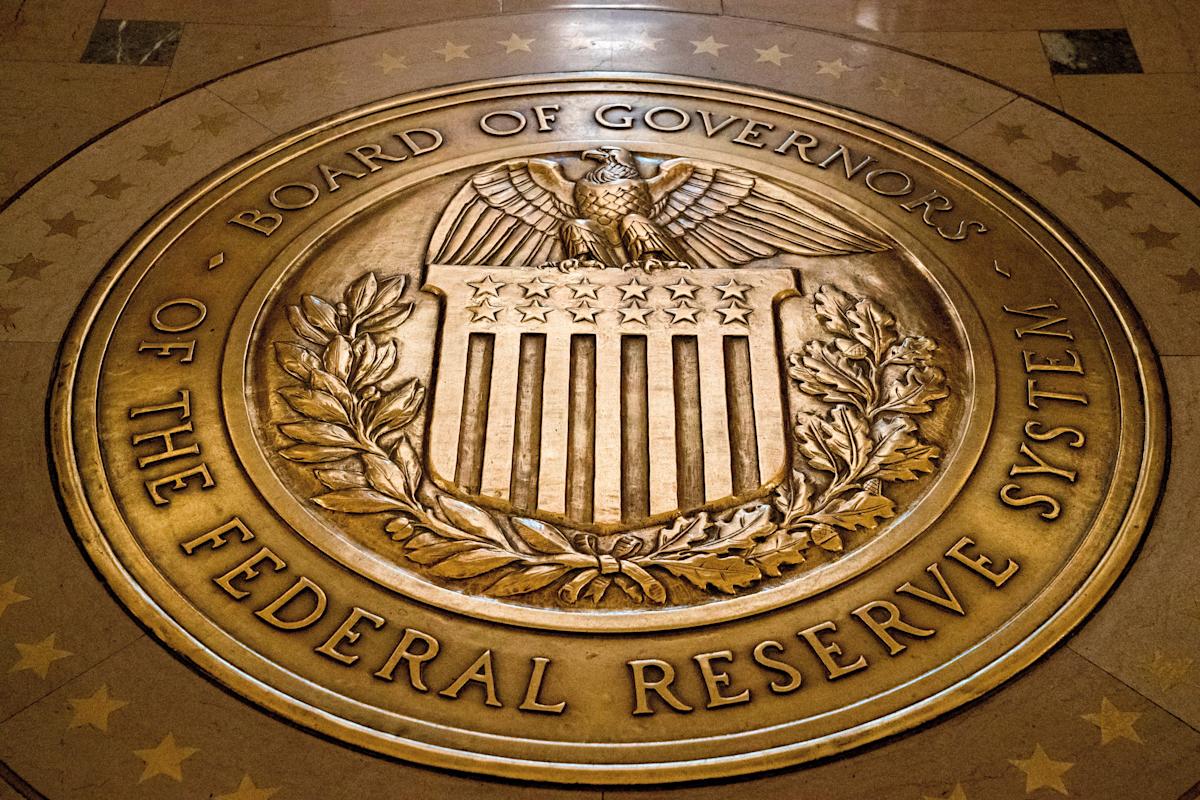US stock futures found some stability on Friday, displaying slight upward movements as investors prepared for Federal Reserve Chair Jerome Powell’s much-anticipated address at the annual Jackson Hole Economic Symposium. The Dow Jones Industrial Average futures (YM=F) recorded a modest increase of 0.2%, while S&P 500 futures (ES=F) rose by 0.1%. Meanwhile, Nasdaq 100 futures (NQ=F) remained flat, reflecting a cautious stance in the tech-heavy sector following a recent lackluster performance for stocks.
### Market Sentiment Before Powell’s Speech
Investor sentiments are heightened with Powell’s remarks poised to influence future monetary policy directions and potentially alter the landscape of interest rate expectations. The anticipation surrounding his speech is palpable, particularly given the shifting dynamics in recent inflation data, which have considerably impacted the stock market.
Last week illustrated the volatility in market predictions surrounding Federal Reserve policies. The Consumer Price Index (CPI) report for July initially sparked optimism, suggesting inflation remained in line with expectations. This led to a brief stock rally and rekindled interest in potential rate cuts. However, those hopes were dampened by the hotter-than-expected Producer Price Index (PPI) report later in the week, which suppressed bullish sentiment and raised doubts about the feasibility of imminent rate cuts.
Market participants have absorbed an array of signals indicating that a reduction in rates may not be forthcoming as soon as anticipated. Notably, the minutes from the Federal Reserve’s last meeting highlighted that dissenting opinions were limited, underscoring broader preference among officials to keep rates stable in light of ongoing inflation concerns overshadowing labor market robustness.
### Divergent Views Among Fed Officials
Recent comments from two Fed policymakers, Jeffrey Schmid and Beth Hammack, further illustrated this caution regarding a potential September rate cut. Their unease reflects a growing sentiment among Fed officials that inflation continues to warrant focus and that any potential easing of monetary policy may be more intricate than previously speculated.
The interplay between inflation data and monetary policy reactions remains key for investors. Wall Street is closely monitoring these developments to adjust their investment strategies accordingly, especially in light of Powell’s impending speech, which could further clarify the Fed’s stance.
### External Pressures: Political Landscape and Earnings Reports
The political landscape adds another layer of complexity to the market dynamics. Former President Donald Trump has maintained vocal criticism of the Federal Reserve, calling for Powell’s resignation and targeting Fed governor Lisa Cook for alleged misconduct. Such external pressures could complicate the Fed’s decision-making framework and given the unpredictable nature of economic policies, the long-term implications for stock market stability remain uncertain.
On the earnings front, companies are also contributing to the market narrative. Zoom Video Communications (ZM) rose in premarket trading, fueled by reports suggesting that artificial intelligence (AI) has positively impacted their business performance. Meanwhile, Ross Stores (ROST) saw an uptick as consumers sought discounted options amidst evolving tariff implications. In contrast, Intuit (INTU) and Workday (WDAY) experienced downturns, emphasizing the mixed performance across sectors as market reactions to earnings reports differ widely.
### The Broader Economic Consequences
Market analysts continue to grapple with the far-reaching ramifications of both domestic and international economic policies. President Trump’s tariff strategies, while aimed at bolstering domestic industries, create uncertainty about inflation trajectories, affecting consumer behavior and business investment decisions. The broader economic landscape is heavily contingent on how such policies interact with Fed monetary policy and overall market dynamics.
As Powell’s speech at Jackson Hole approaches, investors remain on high alert, trying to decipher any indications that could offer insights into the Fed’s roadmap over the coming months. Key data points regarding inflation and employment will undoubtedly influence Powell’s narrative. The market’s current holding pattern suggests that investors are strategically positioning themselves to respond to any potential shifts in Fed policy stemming from Powell’s address.
### Future Outlook
Looking ahead, the dual concerns of inflation and interest rates will remain at the forefront of investor considerations. The fiscal policies emerging from the Fed in reaction to ongoing economic data will serve as a catalyst for market adjustments. In this context, the outcomes of Powell’s speech could provide critical guidance, possibly swaying investor sentiment either towards optimism facilitated by rate cuts or caution should inflationary pressures persist.
In summary, as US stock futures navigate this current holding pattern before Powell’s speech, market participants face a recipe of mixed economic signals, evolving political pressures, and diverse earnings outcomes. The quest for clarity regarding monetary policy is paramount, and investors are keenly awaiting Powell’s insights that could adjust their strategies in a continuously fluctuating economic environment.
In conclusion, the imminent speech by Jerome Powell could markedly influence the trajectory of the stock market, shaping the dynamics of investment sentiments amidst prevailing economic uncertainties. The balance between inflation concerns and labor market stability will dictate the Fed’s approach, with Powell’s address likely acting as a pivotal moment in this ongoing economic saga. Investors and analysts alike are poised for the unfolding narrative, eager to glean insights from the Fed’s leadership. The current calm before the expected market storm emphasizes the significance of Powell’s remarks and their potential to shift the financial landscape dramatically.
Source link









